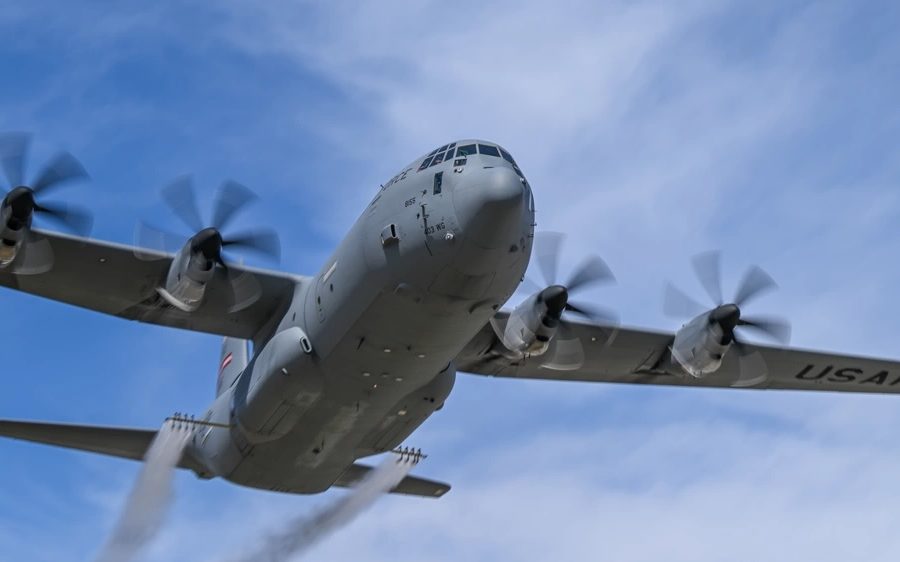From fighting wildfires to landing on ice to hunting hurricanes, the C-130 transport plane has performed a wide range of missions outside its original purpose of ferrying troops and supplies into combat zones since it first flew in 1954. One of those missions is aerial spray, when a Hercules spritzes chemicals out the back that kill disease-carrying insects such as mosquitoes, prevent weeds from covering unexploded ordnance on testing ranges, and even to disperse oil spills.
The 910th Airlift Wing, based at Youngstown Air Reserve Station, Ohio, is the Defense Department’s only large-area, fixed wing aerial spray unit, and late last month they took the mission into the future by testing their spray equipment on the new C-130J-30 Super Hercules, which is due to replace the wing’s current workhorse, the H model of the C-130.
“This is a huge win for Youngstown,” Tech. Sgt. Thomas Wiesen, an aerial spray system maintainer, said in a March 28 press release. “The future of our base is the J model and we needed to prove our spray systems could continue the mission on the new airframe.”
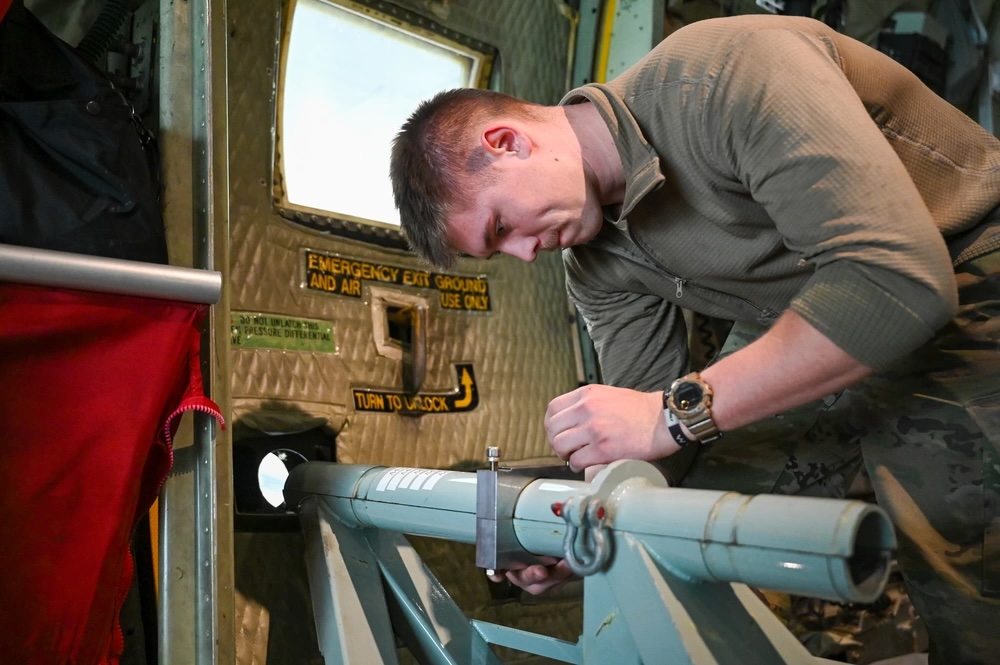
The 910th does not have its own J models yet; those are slated to replace the Hs over the next three years starting this summer. For the test, reservists installed an electronic modular aerial spray system (EMASS) on a J model flown up from Keesler Air Force, Miss. Experts from the C-130 System Program Office at Warner Robins Air Logistics Complex helped adjust the J’s electrical system to power up the machine and install special troop doors so that the spray booms could stick out the side of the aircraft.
The EMASS itself is a new system: members of the 910th used it operationally for the first time in March 2023 to help create fire breaks for wildfire prevention and unexploded ordnance removal at the Utah Test and Training Range. The computerized EMASS sports electronically-controlled valves, which makes it easier to use than the 1980s-era MASS, where valves had to be closed by hand.
“With the EMASS you program in what you need and the computer does what you want it to do,” Staff Sgt. Zachary Wilson, an aerial spray maintenance technician, said in a release at the time. “The computer is a game changer. What we can do now goes so much further than what we could before.”
Most of the spare parts for the MASS are no longer in production, and the older system could carry just 2,000 gallons, while the EMASS can carry up to 3,500 gallons. The 910th aims to replace all five of its legacy MASSs with five new EMASSs.
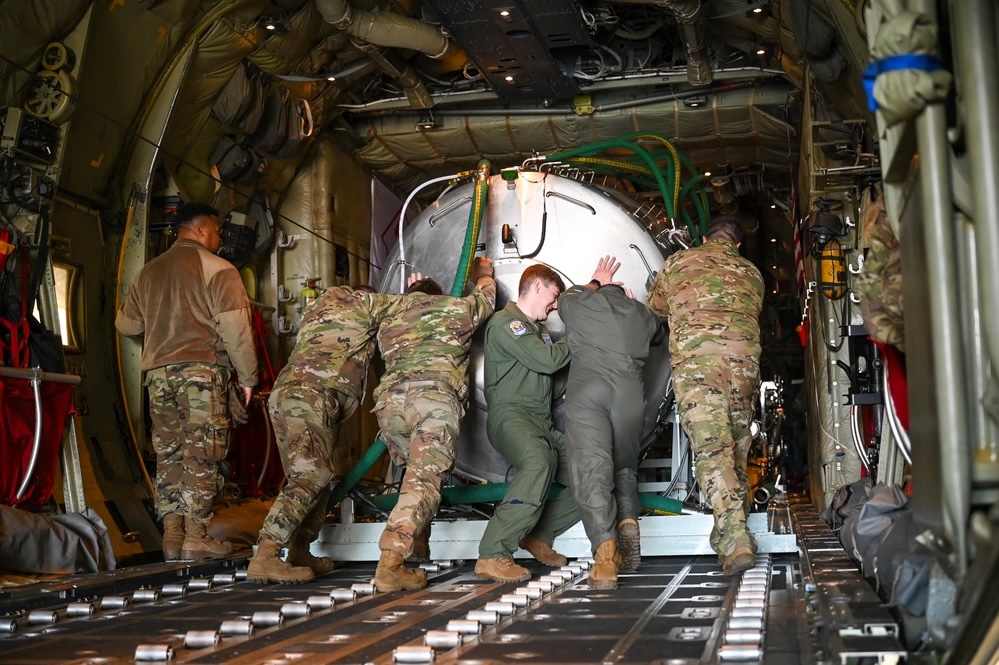
When the C-130J-30 took off from Youngstown with a water-filled EMASS on board on March 21, it was flown by test pilots from Little Rock Air Force Base, Ark., and crewed by spray-qualified loadmasters from Youngstown’s 757th Airlift Squadron. Airmen fastened droplet sample cards to the aircraft’s rear fuselage and tail to test how the EMASS sprayed water out of the J model. They also laid sample cards across Youngstown’s runway to test how the water drifted to Earth.
When testing wrapped up on March 25, the J had passed, but there are still some crew-related challenges to clear. The J model requires three crew members, two fewer than the H model, according to the Air Force.
“The J model currently seems as capable as an H model for aerial spray,” Lt. Col. Karl Haagsma, the chief entomologist assigned to the 757th Airlift Squadron, said in the release. “But there are some significant hurdles to be overcome due to redundancies in navigator and flight engineer positions.”
The Air Force employs medical entomologists—who study insects and the diseases they can carry—to protect the health of service members. In the years since the aerial spray mission began in 1973, the 910th Airlift Wing has responded to powerful storms such as Hurricane Katrina in 2005, where Airmen sprayed the chemical Dibrom over Louisiana to kill mosquitos and filth flies that hatch in the standing flood water left over from a storm.
“The targeted insects are capable of transmitting diseases such as Eastern Equine Encephalitis, West Nile virus and malaria,” Lt. Col. Steve Olson, a 910th entomologist at the time, said in a release. “If not controlled, the probability people will contract these diseases, either in single incidents or in widespread outbreaks, increases greatly.”
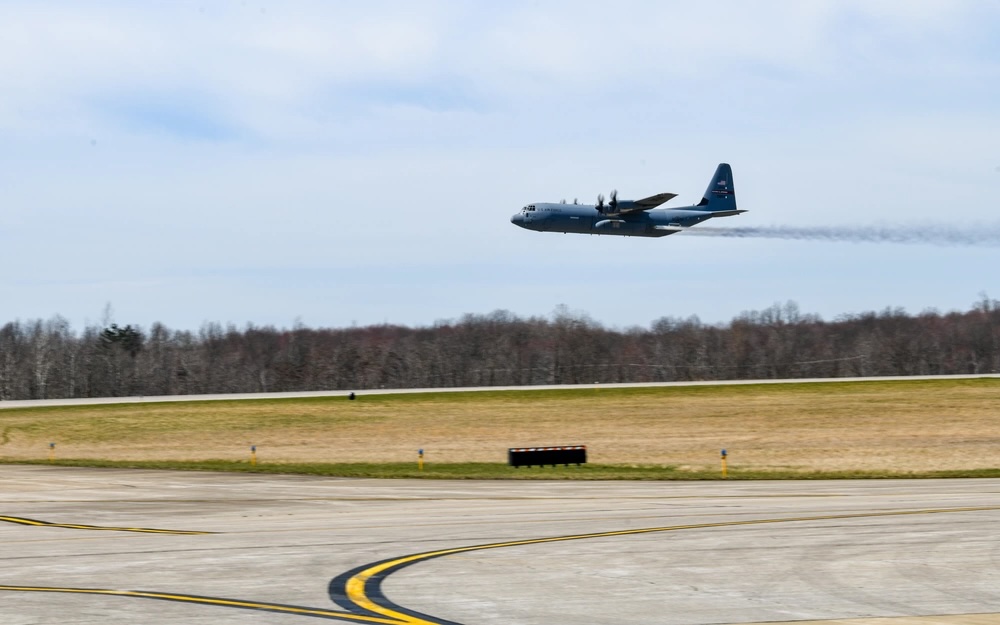
The crews flew before dusk and at night, when the mosquito population was most active, often as low as 150 feet to maximize the insecticide efficacy over the spray area. A gallon of Dibrom treats 128 to 256 acres, a rate of application that does not pose a hazard to humans, Olson said. The 910th uses only Environmental Protection Agency-registered materials, according to the Air Force, but Naled, the chemical that makes up Dibrom, is banned in Europe due to safety concerns.
One of the pilots at the time, Col. Jeffrey Van Dootingh, who later became commander of the 910th, recalled flying over downtown New Orleans “right between the big skyscrapers,” he told the Tribune Chronicle, an Ohio newspaper, in 2022. He said the linemen restoring electricity were particularly grateful for their work.
“They were getting up to 200 (mosquito) bites per minute,” he said. “After we sprayed, they were getting one or two. … I loved that mission because we got immediate feedback.”
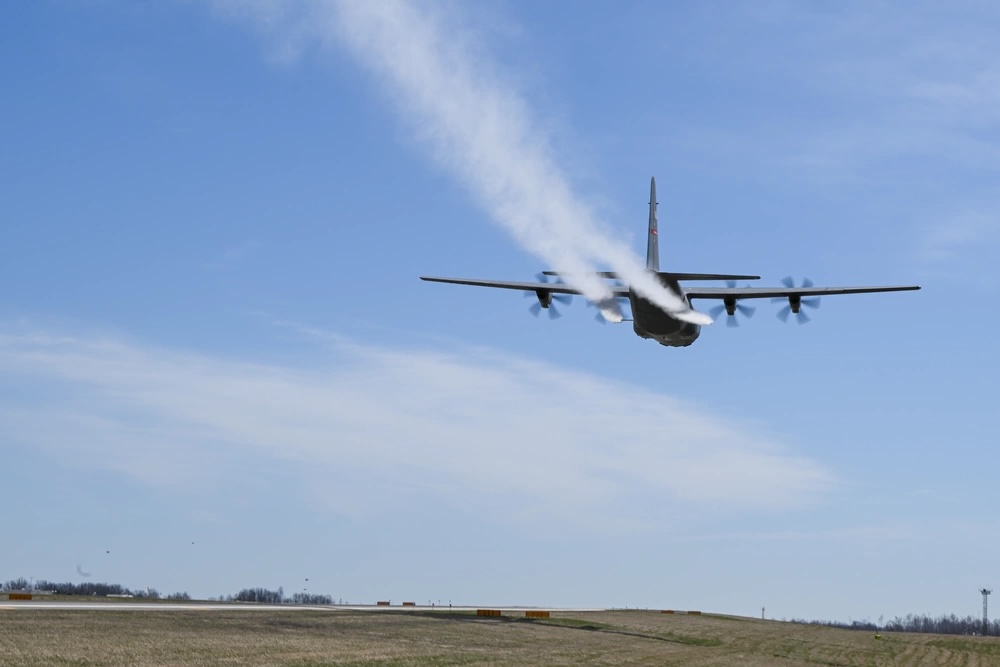
Van Dootingh was also there when the 910th sprayed oil-dispersing agents over 30,000 acres of the Gulf of Mexico after the 2010 Deepwater Horizon disaster, the largest marine oil spill in history. Dispersants purportedly make oil slicks biodegrade faster by dispersing them into tiny droplets. Scientists found that Corexit, the chemical used heavily as a dispersal agent after Deepwater, dramatically improved the air quality for first responders, but the jury is still out on whether it is actually more toxic to marine life than oil alone, the National Academies of Sciences, Engineering, and Medicine wrote in 2019.
Crews have also sprayed herbicides over the Utah Test and Training Range to prevent weeds from covering up unexploded ordnance. None of these missions appear to be going away anytime soon, and now the 910th has new aircraft and technology to keep pace.
“We’ve known H-models for 20-plus years here,” said Master Sgt. Ethan Sanchez, a spray-qualified loadmaster with the 757th. “So us getting the J-model here and verifying our aerial spray system worked on it, I think, shines a light on our ability to adapt to a new airframe and bring our spray mission to the next level with that aircraft.”
